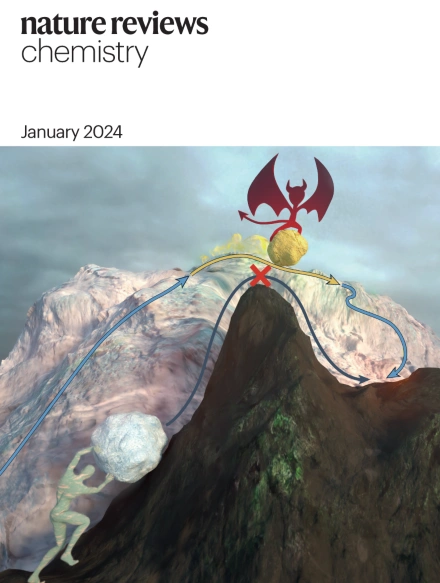Inhibiting and rejuvenating dead lithium in battery materials
IF 51.7
1区 化学
Q1 CHEMISTRY, MULTIDISCIPLINARY
引用次数: 0
Abstract
Lithium and other alkali-metal-based batteries are promising candidates for next-generation energy-storage technologies. However, such batteries suffer from limited lifespans caused by the continuous inactivation of their electrodes during operation and even storage, creating inactivated or ‘dead’ Li, which is a combination of electrically insulated metallic Li and solid–electrolyte interphases (SEIs). Numerous efforts have been devoted to uncovering the origins of this inactivation and how it could be mitigated. Given that dead Li cannot be entirely prevented, rejuvenating it has emerged as a solution for prolonging the lifetimes of batteries and energy-storage systems. Here, we discuss the origins of dead Li and its effects on battery operations. We summarize the emerging challenges related to dead Li, such as SEI dissolution, dead Li migration and Li corrosion. We evaluate the limitations of the present strategies devoted to reducing the formation of dead Li, and how to recover and rejuvenate dead Li through redox chemistry and electrochemical protocols. We conclude with development opportunities in operando diagnoses and the rejuvenation of other inactivated electrode materials beyond Li chemistry in cells and large-scale systems already on the market. The inactivation of electrodes triggers the loss of capacity and decreases the lifetimes of batteries, especially for high-capacity systems. Here the rejuvenation chemistry for re-activating electrodes, aimed at prolonging the lifetimes of lithium-based batteries and similar energy-storage systems, is discussed. Li, lithium; Cu, copper; e–, electrons; RMred, reduced redox mediator; RMox, oxidized redox mediator.


抑制和恢复电池材料中的死锂
锂电池和其他碱金属电池是下一代储能技术的有希望的候选者。然而,这种电池的寿命有限,因为它们的电极在操作甚至存储过程中不断失活,从而产生失活或“死”锂,这是电绝缘金属锂和固体电解质界面(sei)的结合。为了揭示这种失活的根源以及如何减轻这种失活,已经进行了大量的努力。鉴于不能完全阻止锂的死亡,使其恢复活力成为延长电池和储能系统寿命的一种解决方案。在这里,我们将讨论死锂的起源及其对电池运行的影响。我们总结了与死锂相关的新挑战,如SEI溶解、死锂迁移和锂腐蚀。我们评估了目前致力于减少死锂形成的策略的局限性,以及如何通过氧化还原化学和电化学协议恢复和恢复死锂。最后,我们总结了在operando诊断方面的发展机会,以及在电池和市场上已有的大规模系统中除Li化学之外的其他失活电极材料的复兴。
本文章由计算机程序翻译,如有差异,请以英文原文为准。
求助全文
约1分钟内获得全文
求助全文
来源期刊

Nature reviews. Chemistry
Chemical Engineering-General Chemical Engineering
CiteScore
52.80
自引率
0.80%
发文量
88
期刊介绍:
Nature Reviews Chemistry is an online-only journal that publishes Reviews, Perspectives, and Comments on various disciplines within chemistry. The Reviews aim to offer balanced and objective analyses of selected topics, providing clear descriptions of relevant scientific literature. The content is designed to be accessible to recent graduates in any chemistry-related discipline while also offering insights for principal investigators and industry-based research scientists. Additionally, Reviews should provide the authors' perspectives on future directions and opinions regarding the major challenges faced by researchers in the field.
 求助内容:
求助内容: 应助结果提醒方式:
应助结果提醒方式:


